I/0
Digital Extractivism
2003 - 2022
"The world’s most valuable resource is no longer oil, but data" (The Economist, 2017)
Data has been a primary concern of my work since the early 2000s. I am interested in its materiality and its political and ethical properties as the basis of contemporary techno-capitalism. Data is implicated in a new form of extraction of surplus value that views the human experience as free raw material to be harvested and monetised.
This article spotlights a selection of my work concerned with the economy of data.
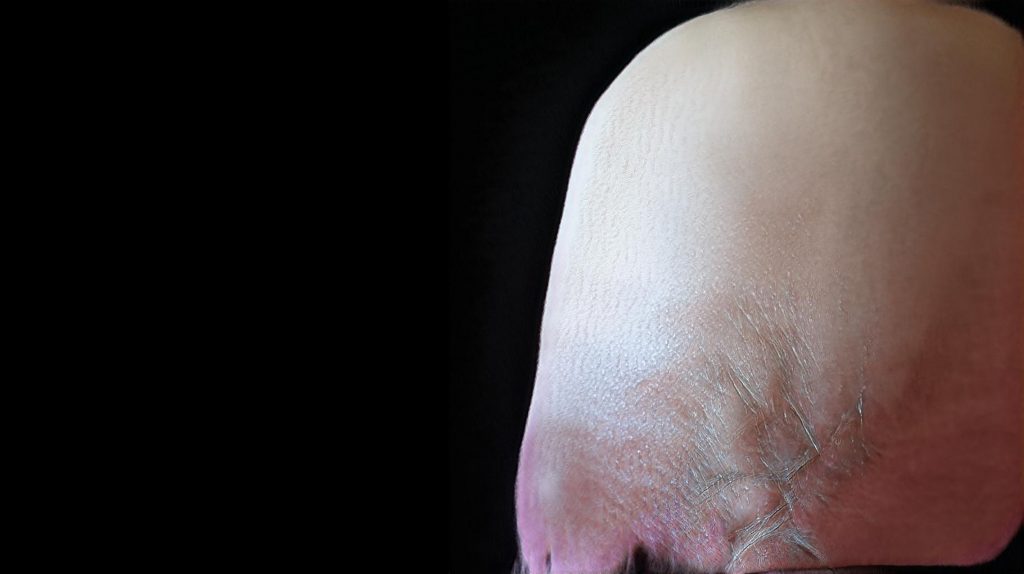
Intimacy of Mutation
2021
Intimacy of Mutation is a view of the body from the perspective of a machine learning algorithm trained on a data set of intimate images. Machine learning is central to digital extractivism. The value reaped from large volumes of personal data lies in the ability to use machine learning to produce a realistic model of individuals with the aim of predicting their future habits and behaviours.
Intimacy of Mutation is an uncanny collection of photorealist fragments of flesh; A mutant or mutilated vision of the body.
A number of my early works focused on the relationship between the body, data and surveillance.
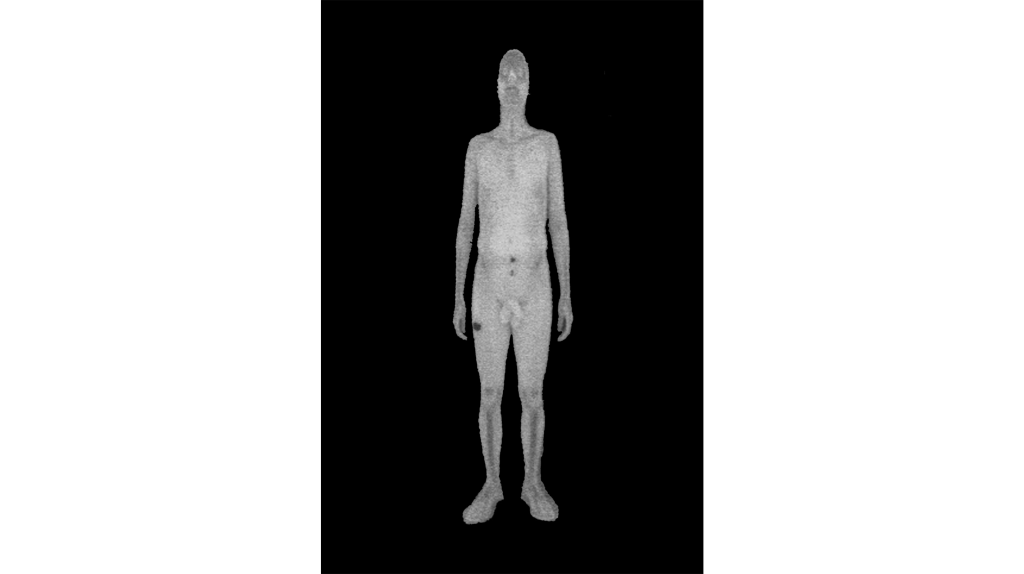
Portrait using Backscatter Radiation
78”x 48” Digital Image
2006
Portrait using Backscatter Radiation asks questions about borders and boundaries.
It explores the mechanical gaze of surveillance equipment used at territorial borders. A Rapiscan Secure 1000 airport security scanner was used to produce these images. They are the raw images produced by backscatter radiation before a software privacy filter has been applied. The scanner penetrates below the clothes but occasionally also the skin, creating an eerie ghost image that is neither photo nor Xray.
Biometrics was the subject of a playful intervention in which I sold designer biometric data at Internet Yami-Ichi markets in both Berlin and Brussels.
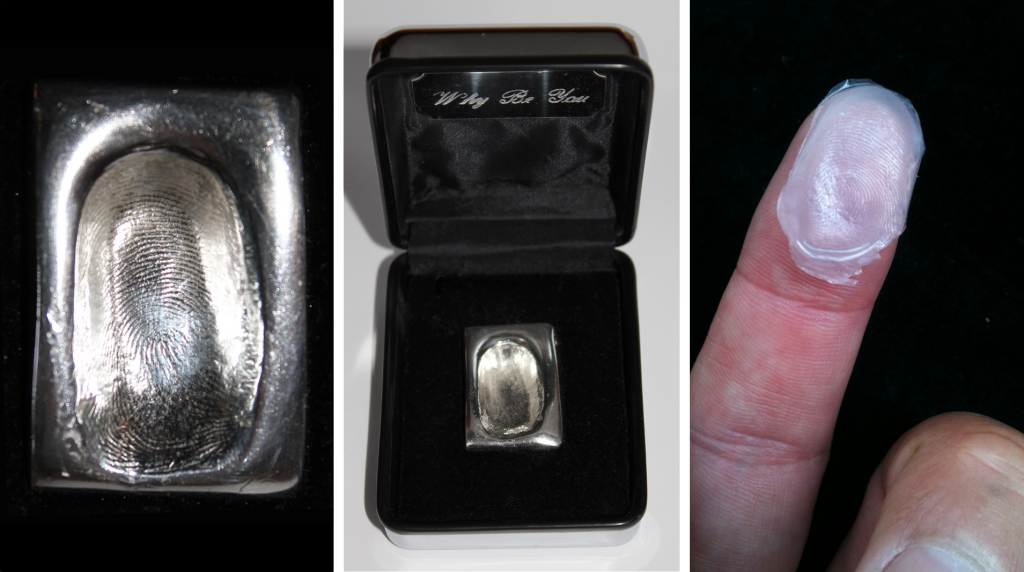
Designer Biometric Data for Sale
2006-16
Designer Biometric data for Sale explores agency and ownership of biometric data through the performance of selling silver casts of fingerprint data. Each silver cast can be used to create wearable alternative fingerprints. The work examines the privacy and ownership of bio-data.
While states exploit biometric data to police migration, surveillance capitalism describes the practices of data extraction used by social media platforms.
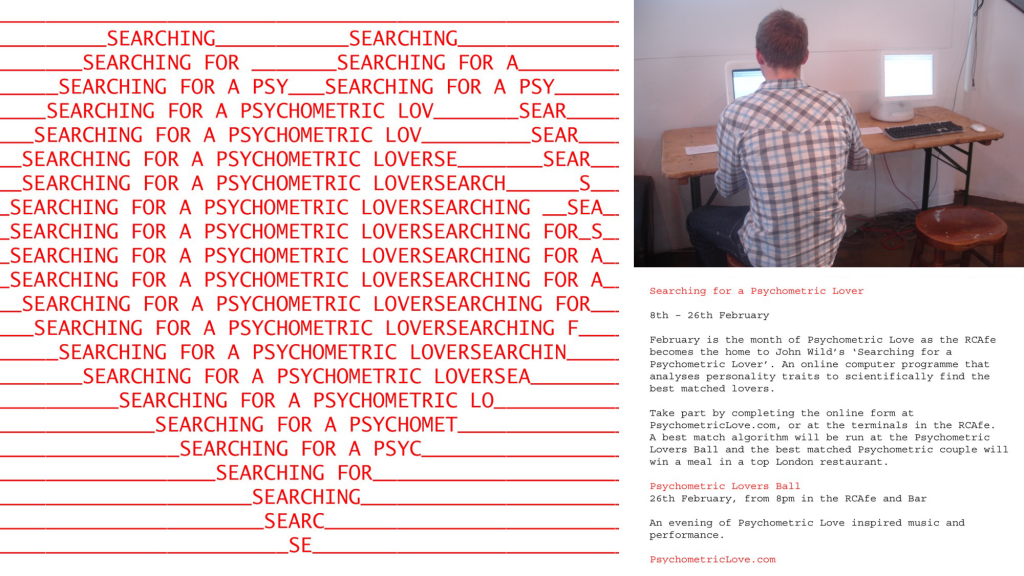
Searching for a psychometric lover
2012
Searching for a psychometric lover highlights the exploitative practices of data extraction used by social media platforms by exploring peoples' willingness to hand over their most personal and intimate sexual desires to an anonymous online service.
Searching for a Psychometric Lover presented an algorithmic dating experience with a twist. Participants were asked to answer a series of psychometric tests used by popular dating sites. Under the guise of finding a perfectly matched sexual partner, the tests asked for increasingly intimate and personal details about the participant’s sexual fantasies and desires. Participants were incentivised by a gamified strategy that offered prizes for those with the closest matching psychometric scores.
Before entering the system, participants had to agree to terms and conditions that gave total ownership of their data for future use by the installation stolen.data/confessions.
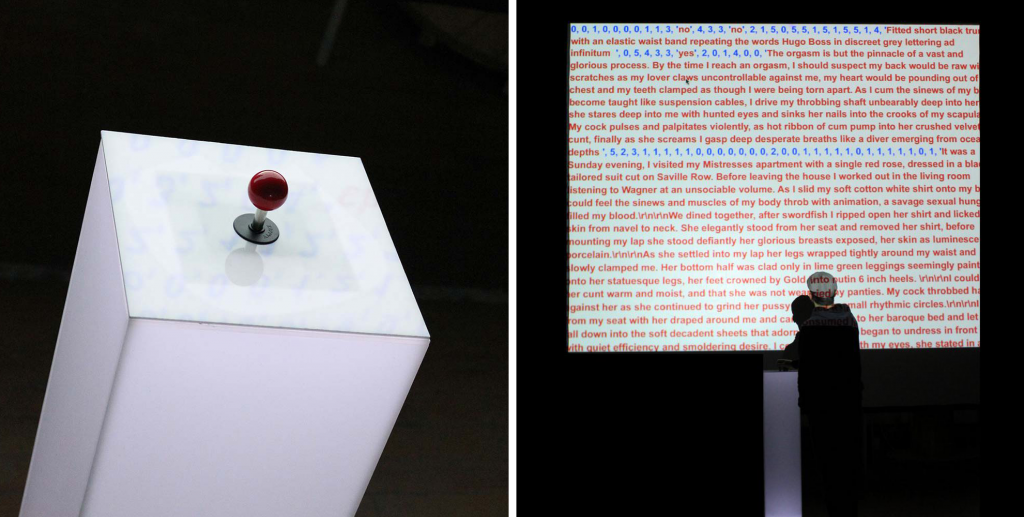
Stolen Data / Confessions
2012
stolen.data/confessions consisted of a large screen and an arcade joystick mounted on an illuminated Perspex plinth. A scrolling database dump, harvested from the Searching for a Psychometric Lover dating site, was projected on the screen. The joystick allowed viewers to slow down and read the personal data implicating themselves in a voyeuristic act of data theft.
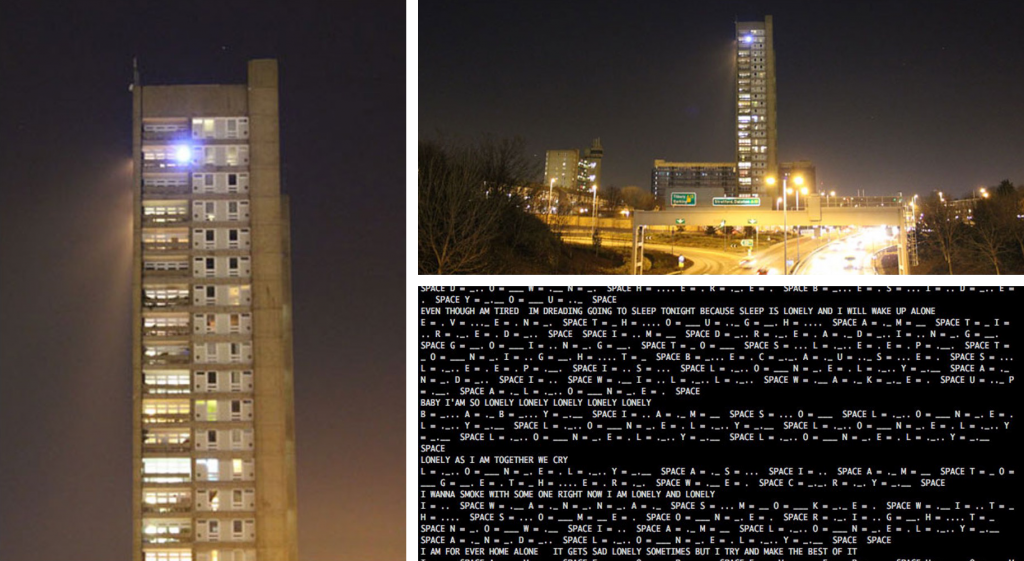
High Rise Beacon
2012
Digital extractivism does not restrict itself to behaviour predictions. It is also interested in our affective states. Sentiment analysis uses natural language processing and text analysis to extract and study affect.
When producing High Rise Beacon, I was interested in loneliness amongst social media users. The installation consisted of a morse signal light situated near the top of a 27-storey housing block in Poplar, East London. Real-time tweets expressing feelings of ‘loneliness’ were extracted and rebroadcast in Morse code from the signal light: a calling out into the darkness with little possibility of an answer.
The relationship between data and space has been a longstanding area of my research. The installation Descartes Corridor confronts this directly.
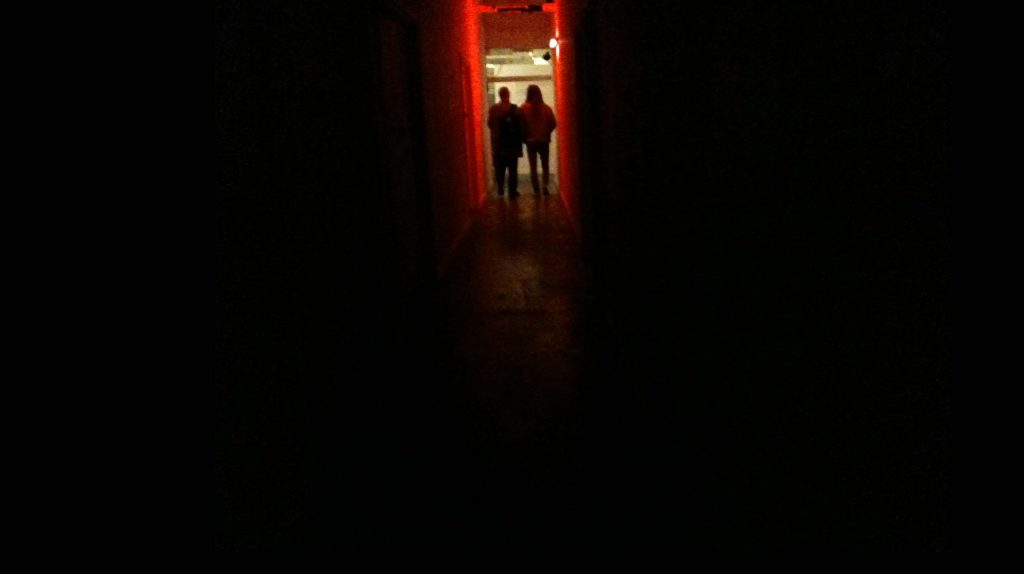
Descartes Corridor
2010
Elevator Gallery London
Descartes Corridor consisted of an invisible sonic beam running down the centre of the gallery’s corridor. When the corridor was entered, the distance between the entrance and the person was calculated. The distance data was processed then spoken, via a speech synthesiser, from a wall-mounted speaker.
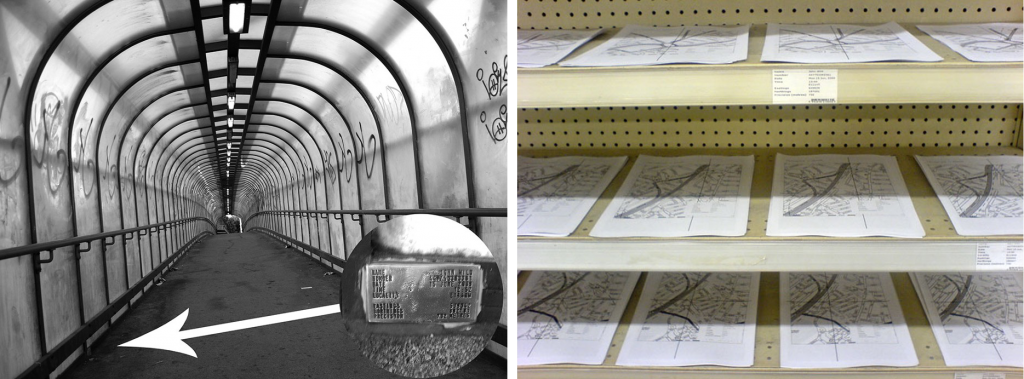
Leytonstone :: Traces
Data and the physical space of the city were also central to Leytonstone :: Traces
It's impossible to move, to live, to operate at any level without leaving traces, bits, seemingly meaningless fragments of personal information.
I collected the GSM location data created by my mobile phone whilst walking Leytonstone. The GSM data was solidified into a series of pewter plaques and placed back at the physical locations indicated by the data. Maps showing the location of the plaques were made available.
